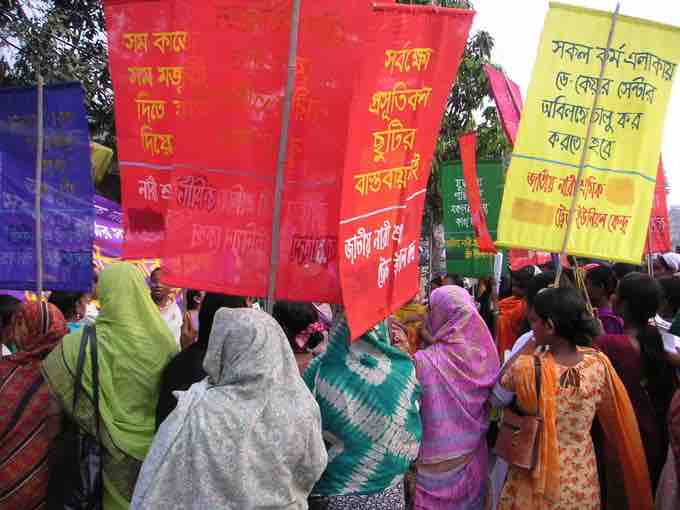The feminist movement refers to a series of campaigns for reforms on issues such as reproductive rights, domestic violence, maternity leave, equal pay, women's suffrage, sexual harassment and sexual violence. The movement's priorities vary among nations and communities and range from opposition to female genital mutilation in one country or to the glass ceiling (the barrier that prevents minorities and women from advancing in corporate hierarchies) in another.
First-wave feminism refers to a period of feminist activity during the 19th and early twentieth century in the United Kingdom, Canada, the Netherlands and the United States. It focused on de jure (officially mandated) inequalities, primarily on gaining women's suffrage (the right to vote).
Second-wave feminism refers to a period of feminist activity beginning in the early 1960s and through the late 1980s. Second Wave Feminism has existed continuously since then, and continues to coexist with what some people call Third Wave Feminism. Second wave feminism saw cultural and political inequalities as inextricably linked. The movement encouraged women to understand aspects of their personal lives as deeply politicized, and reflective of a sexist structure of power. If first-wavers focused on absolute rights such as suffrage, second-wavers were largely concerned with other issues of equality, such as the end to discrimination.
Finally, the third-wave of feminism began in the early 1990s. The movement arose as responses to what young women thought of as perceived failures of the second-wave. It was also a response to the backlash against initiatives and movements created by the second-wave. Third-wave feminism seeks to challenge or avoid what it deems the second wave's "essentialist " definitions of femininity , which (according to them) over-emphasized the experiences of upper middle class white women. A post-structuralist interpretation of gender and sexuality is central to much of the third wave's ideology. Third wave feminists often focus on "micropolitics," and challenged the second wave's paradigm as to what is, or is not, good for females.
Global Feminism
Immediately after WWII, a new global dimension was added to the feminist cause through the formation of the United Nations (UN). In 1946 the UN established a Commission on the Status of Women. In 1948 the UN issued its Universal Declaration of Human Rights which protects "the equal rights of men and women", and addressed both equality and equity issues. Since 1975 the UN has held a series of world conferences on women's issues, starting with the World Conference of the International Women's Year in Mexico City, heralding the United Nations Decade for Women (1975–1985). These have brought women together from all over the world and provided considerable opportunities for advancing women's rights, but also illustrated the deep divisions in attempting to apply principles universally, in successive conferences in Copenhagen (1980) and Nairobi (1985). However by 1985 some convergence was appearing. These divisions among feminists included: First World vs. Third World; the relationship between gender oppression and oppression based on class, race and nationality; defining core common elements of feminism vs. specific political elements; defining feminism, homosexuality, female circumcision, birth and population control; the gulf between researchers and the grass roots; and the extent to which political issues were women's issues. Emerging from Nairobi was a realization that feminism is not monolithic but "constitutes the political expression of the concerns and interests of women from different regions, classes, nationalities, and ethnic backgrounds. There is and must be a diversity of feminisms, responsive to the different needs and concerns of women, and defined by them for themselves. This diversity builds on a common opposition to gender oppression and hierarchy which, however, is only the first step in articulating and acting upon a political agenda. " The fourth conference was held in Beijing in 1995. At this conference a the Beijing Platform for Action was signed. This included a commitment to achieve " gender equality and the empowerment of women". The most important strategy to achieve this was considered to be "gender mainstreaming " which incorporates both equity and equality, that is that both women and men should "experience equal conditions for realizing their full human rights, and have the opportunity to contribute and benefit from national, political, economic, social and cultural development. "

International Women's Day Rally
International Women's Day rally in Dhaka, Bangladesh, organized by the National Women Workers Trade Union Centre on 8 March 2005.